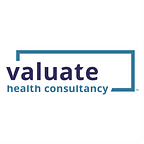The OCM Crossroads
ValuateHealth.com | EntreeHealth.com
THE OCM CROSSROADS
A look back at OCM
Medicare accounts for approximately 50% of the payer mix for all oncology coverage in the US. As such, Medicare is in a strong position to influence and incentivize value-based care (VBC). The Oncology Care Model (OCM) is the leading Medicare oncology VBC program, and it’s about to change course.
OCM presented a new and exciting opportunity for oncology providers to rethink the way oncology care was coordinated and reimbursed through Medicare. Initial provider enrollment into the OCM program was impressive. CMMI reported that 196 qualified providers applied and were accepted.
Although CMMI has not disclosed the current number of practices in the OCM program, it is estimated that the number of participants has decreased (to ~175) due to shortcomings of the model.
Payment frustrations
Highly complex methodologies for calculating performance-based payment (PBP) under OCM are a principal cause for provider discontent. As the essential financial incentive for OCM participation, PBP has been a difficult experience for providers due to irregularities in beneficiary “attribution” and cumbersome quality and performance reporting requirements.
OCM crossroads: To stay or not to stay
As of August 2019, OCM participants fall into 2 categories based on PBP:
1Those that did NOT earn a PBP are mandated to either assume 2-sided risk (upside/downside) or terminate OCM participation
2Those that earned a PBP can elect 2-sided risk, but do so voluntarily
The choice of accepting risk may affect up to 1/3 of OCM participants. Accepting 2-sided risk presents an opportunity to earn positive rewards for performance, but also adds a layer of uncertainty — practices must pay an equal-measure penalty if they cannot satisfy expenditure targets.
Who’s staying?
- Some participants have already elected to move to OCM two-sided risk
- Others have indicated that they are not comfortable with the risk exposure and will exit the OCM program at the conclusion of the current performance period on December 31 of this year
Questions your OCM customer will need to answer before
assuming 2-sided risk:
Why have actual expenditures consistently exceeded target amounts?
What, if anything, can be done to change course?
How can a practice earn a PBP during the remainder of the OCM program?
Will additional staff and infrastructure investment increase the chances of earning PBP?
OCM participants have invested heavily in staff and infrastructure well beyond the traditional oncology practice. If your customers cannot answer these questions confidently, additional OCM investment may be unwise; missing PBP targets will mean exposure to financial recoupment by CMS.
Follow us on LinkedIn to learn more about OCM opportunities in 2020.
